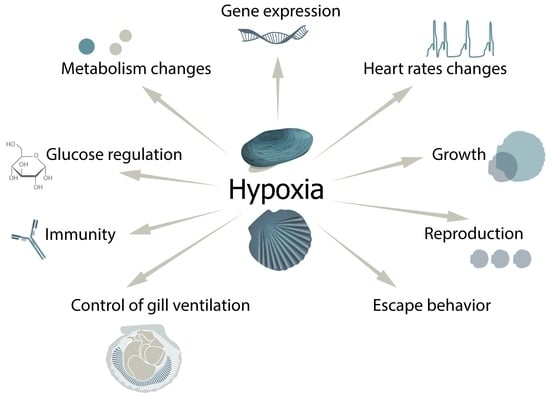Role of the Neuroendocrine System of Marine Bivalves in Their Response to Hypoxia
Abstract
Share and Cite
Kotsyuba, E.; Dyachuk, V. Role of the Neuroendocrine System of Marine Bivalves in Their Response to Hypoxia. Int. J. Mol. Sci. 2023, 24, 1202. https://doi.org/10.3390/ijms24021202
Kotsyuba E, Dyachuk V. Role of the Neuroendocrine System of Marine Bivalves in Their Response to Hypoxia. International Journal of Molecular Sciences. 2023; 24(2):1202. https://doi.org/10.3390/ijms24021202
Chicago/Turabian StyleKotsyuba, Elena, and Vyacheslav Dyachuk. 2023. "Role of the Neuroendocrine System of Marine Bivalves in Their Response to Hypoxia" International Journal of Molecular Sciences 24, no. 2: 1202. https://doi.org/10.3390/ijms24021202
APA StyleKotsyuba, E., & Dyachuk, V. (2023). Role of the Neuroendocrine System of Marine Bivalves in Their Response to Hypoxia. International Journal of Molecular Sciences, 24(2), 1202. https://doi.org/10.3390/ijms24021202






